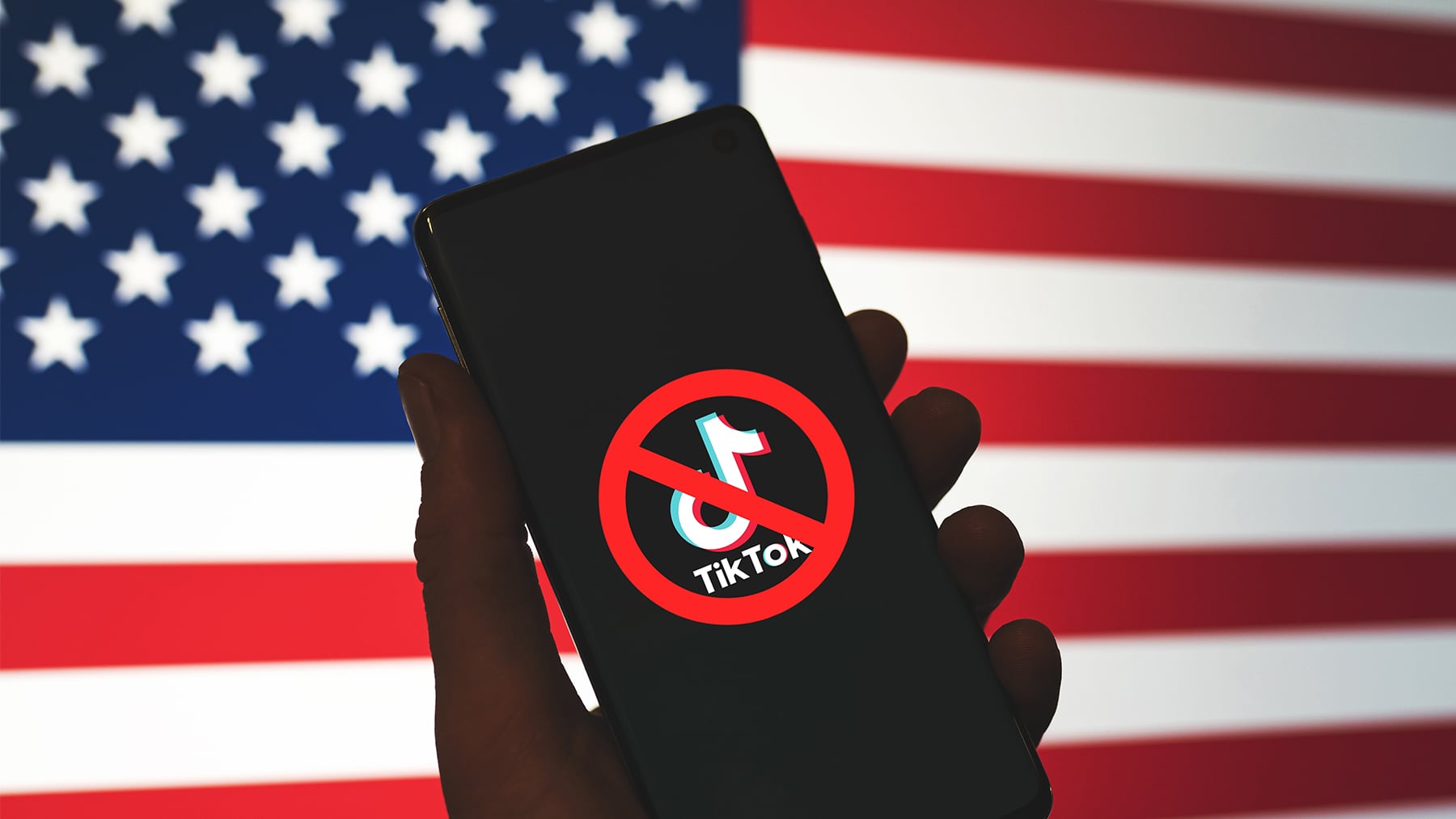
Upon reentering the Oval Office, one of the first items on President Donald Trump’s agenda was to grant a stay of execution for TikTok.
Under a law passed by Congress, the popular video app was facing a nationwide ban starting Jan. 19, having failed to divest its US operations from its China-based owner to ease national security concerns. But a day later, Trump intervened, signing an executive order designed to delay enforcement of that law and give TikTok’s parent company, ByteDance Ltd., more time to find a buyer.
Whether the order is valid is an open question, as is whether the additional 75 days Trump offered will make a difference. ByteDance has spent months repeating that it’s not interested in relinquishing its US business. Still, Trump, who fancies himself a dealmaker, is eager to facilitate a sale of TikTok that could give the US government more influence over a social media platform that the company says has more than 170 million American users.
Why does TikTok face a US ban?
US lawmakers have long been concerned that TikTok could be used to spy on American citizens. This stems from the fact that China requires its companies, upon request, to share any national security-related data with the government, as well as the fact that ByteDance conducted improper surveillance on journalists who’d written critically about the company.
There are also fears that the Chinese government could abuse the data of US TikTok users — for example, by collecting dossiers of personal information for blackmailing purposes or exploiting content preferences to manipulate the type of videos users see and spread propaganda.
TikTok has pushed back against these integrity concerns and sought to counter them. The company said it spent more than $2 billion to migrate the storage of US users’ data to US-based cloud servers operated by Oracle Corp. in 2022.
These efforts failed to assuage lawmakers. The Protecting Americans from Foreign Adversary Controlled Applications Act received broad support from both Democrats and Republicans in Congress and was signed into law by President Joe Biden in April 2024. The legislation provided for a countrywide ban on TikTok unless ByteDance undertook a “qualified divestiture” by Jan. 19, 2025 — meaning the US portion of the business had to be sold and the president had to deem the app no longer controlled by a foreign adversary.
Prior to that cutoff date, TikTok challenged the sale-or-ban law in court, arguing it violates the free speech of the app’s US users. But the Supreme Court ultimately affirmed what it called the “well-supported” national security concerns of Congress and determined in a unanimous decision that the law is constitutional.
Didn’t Trump previously want a ban on TikTok?
Yes. Trump tried to ban the app during his first term as president over similar national security concerns. He later came to embrace it as a conduit to young voters in his reelection campaign, amassing more than 15 million followers since joining the platform in June 2024.
“I guess I have a warm spot for TikTok that I didn’t have originally,” Trump said when signing the executive order to give the app a lifeline. TikTok chief executive officer Shou Zi Chew attended Trump’s inauguration alongside other technology moguls.
Trump has recently downplayed the national security threat posed by TikTok, arguing that all electronic products manufactured in China could carry an espionage risk and that TikTok isn’t the most serious problem. “Is it that important for China to be spying on young people, on young kids, watching crazy videos?” Trump asked in a January appearance on Fox News.
What does Trump’s executive order on TikTok aim to do?
Trump’s executive order, signed just hours after his inauguration, aimed to extend the deadline for ByteDance to divest the US arm of TikTok to April 5. The president instructed his attorney general, since confirmed as Pam Bondi, not to enforce the ban during this period or impose any penalties for non-compliance. The order, at most, is a temporary reprieve that left room for a ban if a deal for sale isn’t made during the extended window.
Is Trump’s executive order on TikTok legitimate?
According to the law passed by Congress, the president could have granted a one-time delay of the ban for as many as 90 days if “significant progress” was demonstrated toward securing a sale and binding legal agreements were in place to get the deal over the line in the new time frame.
But when Trump’s executive order was issued, such progress had not been made. ByteDance’s position then was — as it is now — that it refuses to entertain a sale. This brought into question whether Trump has the power to simply ignore, or suspend the operation of, federal law.
“I am at a loss to describe to you where the law is at this moment,” said Dick Durbin, the Senate Judiciary Committee’s top Democrat, after the executive order was announced. It was overwhelmingly passed by Congress, signed by President Biden and upheld by the Supreme Court, he added, and “now the new president is saying, ‘ignore it if you wish.’”
Even some fellow Republicans disagreed with Trump’s move. Senators Tom Cotton and Pete Ricketts said in a statement there is “no legal basis” for an extension beyond the original effective date of the ban. Cotton also warned on social media platform X that tech companies that ignore the law and continue to facilitate TikTok’s operation face “hundreds of billions of dollars of ruinous liability.”
That liability is a question that has loomed over tech firms that partner with TikTok. Under the law, service providers that support TikTok — for example, by offering it in their app store or storing its data on their servers — could face fines of $5,000 per user, putting their potential exposure as high as $850 billion.
Trump said in his executive order that these companies were absolved of violating the law during the extension period and any associated financial penalties. But it’s disputed whether he has the authority to do so and whether his order is sufficient legal cover. This created a split among tech titans over whether to honour the law or defer to the president’s wishes. Oracle has continued to provide cloud and infrastructure services to TikTok, while Apple Inc. and Alphabet Inc.’s Google pulled the platform from their app stores.
What has this meant for TikTok users?
TikTok briefly went dark ahead of the ban’s original deadline kicking in but it restored its services on Jan. 19, after Trump, then president-elect, pledged to sign an executive order upon reentering office granting the app a reprieve.
But back up and running doesn’t mean back to normal. The law doesn’t require people to remove the app from their devices; rather it bars companies that support TikTok from continuing to provide critical services. So, because Apple and Google are adhering to the law and TikTok is absent from their app stores, new users can’t download the app. And while existing users can still access TikTok, they can’t get important app updates and security fixes. If US TikTok users are hit by software bugs or other performance issues, the company may soon struggle to remedy these problems.
There could be bigger challenges to come given that Trump’s executive order was designed as a short-term patch and doesn’t guarantee the availability of TikTok in the US beyond the 75-day reprieve.
How would the US arm of TikTok even be spun off?
It’s hard to say given that ByteDance has maintained that TikTok’s US arm isn’t for sale.
TikTok, which entered the US market in 2016, has 170 million users in the country, and the platform’s US business has been valued as high as $50 billion. Divesting this asset would be a massive retreat from the most lucrative market for social media advertising. It could threaten TikTok’s success in other parts of the world, too, if creators and advertisers shift to rival products, such as Instagram’s Reels or YouTube Shorts, to better reach the US audience.
Then there is the matter of TikTok’s coveted algorithm. By analysing users’ activity and tailoring recommendations for the next thing to watch, the algorithm is what makes the app so engaging and keeps people scrolling. Beyond ByteDance not wanting to give up its “secret sauce,” Beijing’s export rules prevent Chinese companies from selling their software algorithms.
TikTok is also a global service and its systems are so deeply entangled with ByteDance that it would be nearly impossible to technologically unwind them.
Should ByteDance change its stance and strike a deal, under the law, Trump would have final say over its approval. But the company may be looking for an alternative path, according to board member Bill Ford, who’s also the chief executive officer of private equity firm General Atlantic. He told Bloomberg Television that ByteDance thinks there may be solutions “short of having to sell,” potentially involving a change of control locally to ensure the setup complies with US legislation.
Who’s interested in acquiring TikTok?
ByteDance’s “not for sale” sign hasn’t stopped eager buyers from lining up. Interested parties include the duo of former Los Angeles Dodgers owner Frank McCourt and “Shark Tank” personality Kevin O’Leary. They’ve said they could buy TikTok without its prized algorithm and build their own recommendation system. This could be more appealing to ByteDance and the Chinese government given their resistance to parting with proprietary technology. But it’s unclear whether the revised app would be nearly as engaging or popular as TikTok is in its current form.
Among the other parties circling is top YouTuber MrBeast, who is talking to several investment groups. Trump, meanwhile, has touted the idea of the US government taking a 50 pecent stake in TikTok’s US arm and floated Oracle Chairman Larry Ellison and X owner Elon Musk as possible acquirers. He also told reporters that Microsoft has entered the fray, although the company itself hasn’t publicly commented. Microsoft previously attempted to purchase TikTok’s US business in 2020, when Trump pursued a ban during his first term.
Musk is perhaps one of the only potential acquirers that could get the necessary approvals from both the US and China. Chinese government officials have discussed the idea of Musk owning TikTok, possibly as part of an effort to forge a better relationship with the man who has the US president’s ear.
Countering Trump’s leverage over a potential deal, officials in China know how popular TikTok is to American users, and if it’s shut down disgruntled users could punish US politicians at the polls. Realising the app is used by half the country, some US leaders — including Trump and members of Congress — have flip-flopped on their initial feeling toward a ban.
How are TikTok’s rivals responding?
Competitors have been making aggressive moves to scoop up TikTok’s business. The same day TikTok video editor CapCut went temporarily offline due to the ban, Instagram announced a video editor of its own, called Edits, with a February release date. X also revealed there would soon be a dedicated video tab in its mobile app.
Rivals are going after TikTok’s creators, too. Instagram is reportedly luring big TikTokers to its app by offering cash bonuses in the tens of thousands of dollars for posting on its platform, Instagram Reels. Meanwhile, newsletter platform Substack launched a $20 million “Creator Accelerator Fund” with a similar goal. Snap, popular with many of TikTok’s young users, and Google’s YouTube, which offers a TikTok-esque video feature called YouTube Shorts, have also spied an opportunity to poach users.
US tech giants aren’t the only ones capitalising on the TikTok chaos. Chinese peer Xiaohongshu — known as RedNote in English — skyrocketed to the top of Apple’s US app store ahead of the TikTok shutdown, with many of the US users who flocked to the service calling themselves “TikTok refugees.” The app, which resembles a crossover between Instagram and Pinterest, recently changed its interface to look even more like TikTok.
But for all these competitors, retaining any business lured from TikTok will be a challenge if their algorithms and monetisation offerings for creators aren’t up to scratch.
Have any other countries banned TikTok?
Yes, to different degrees. Even in China, TikTok is not the same as the app available in the US. ByteDance runs a separate version there, called Douyin, that adheres to the strict censorship rules of the Chinese government.
Beyond that restriction, the most significant outright ban was introduced in India, then TikTok’s biggest market, in 2020, when the country outlawed dozens of Chinese apps. Notably, ByteDance retained access in China to sensitive data already collected on India’s many millions of users.
Some parts of the world, including Canada, the UK, European Union, Australia and New Zealand, also have partial bans that prohibit TikTok from being installed on government-issued devices, government workers’ phones or government-affiliated networks. A few other countries — Pakistan, Indonesia, Nepal — have banned TikTok but subsequently reinstated it.
By Kurt Wagner and Alexandra S. Levine



